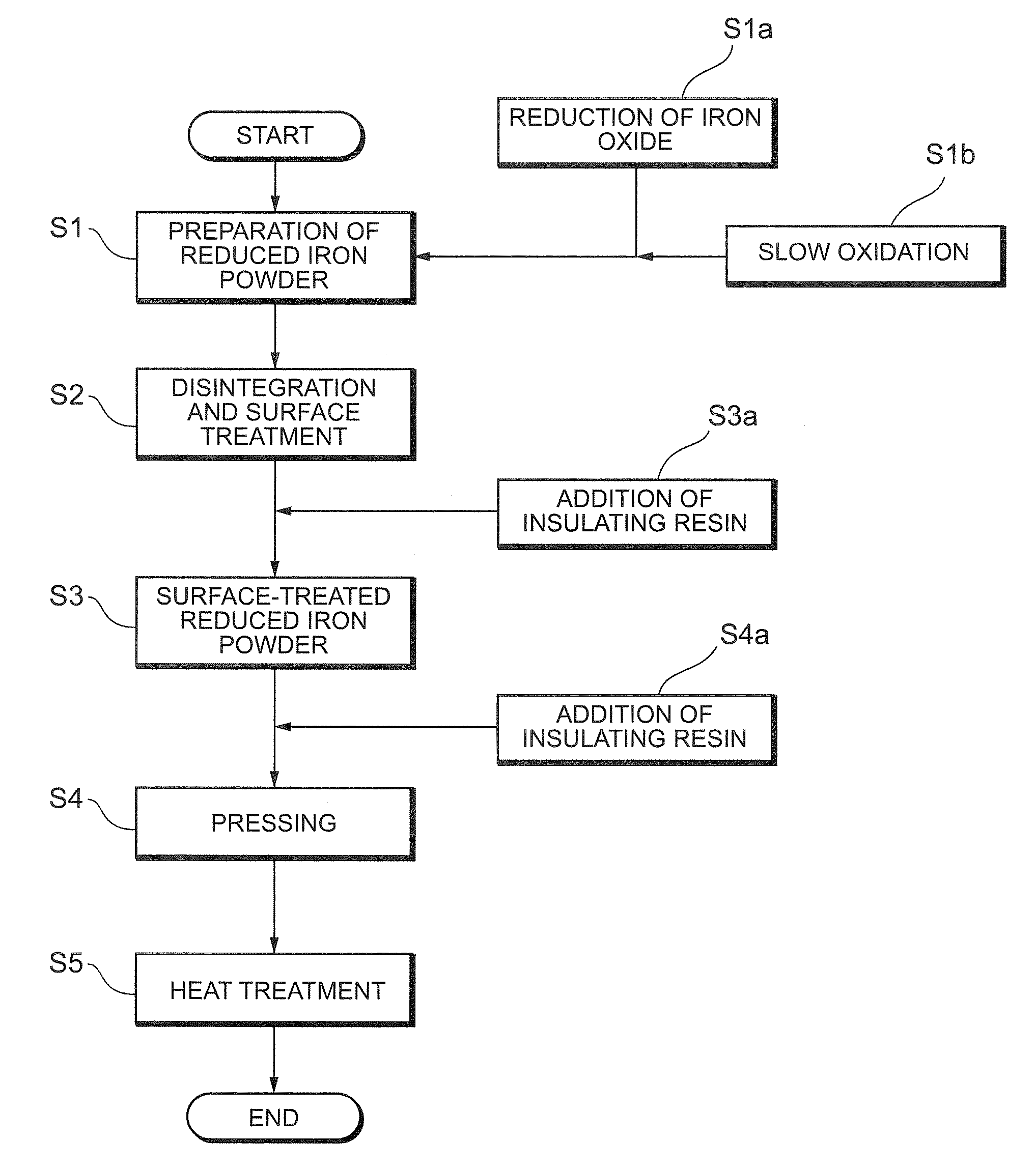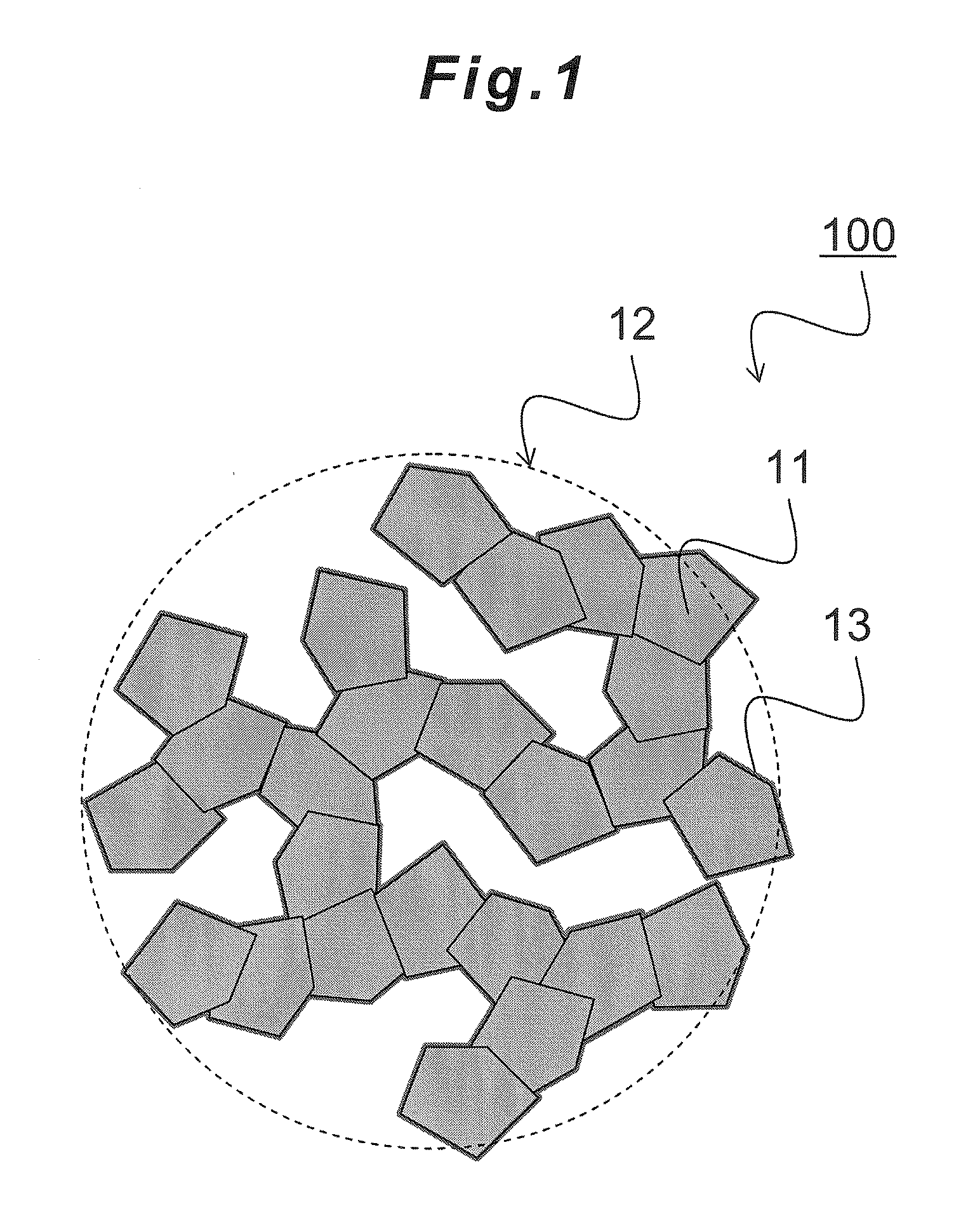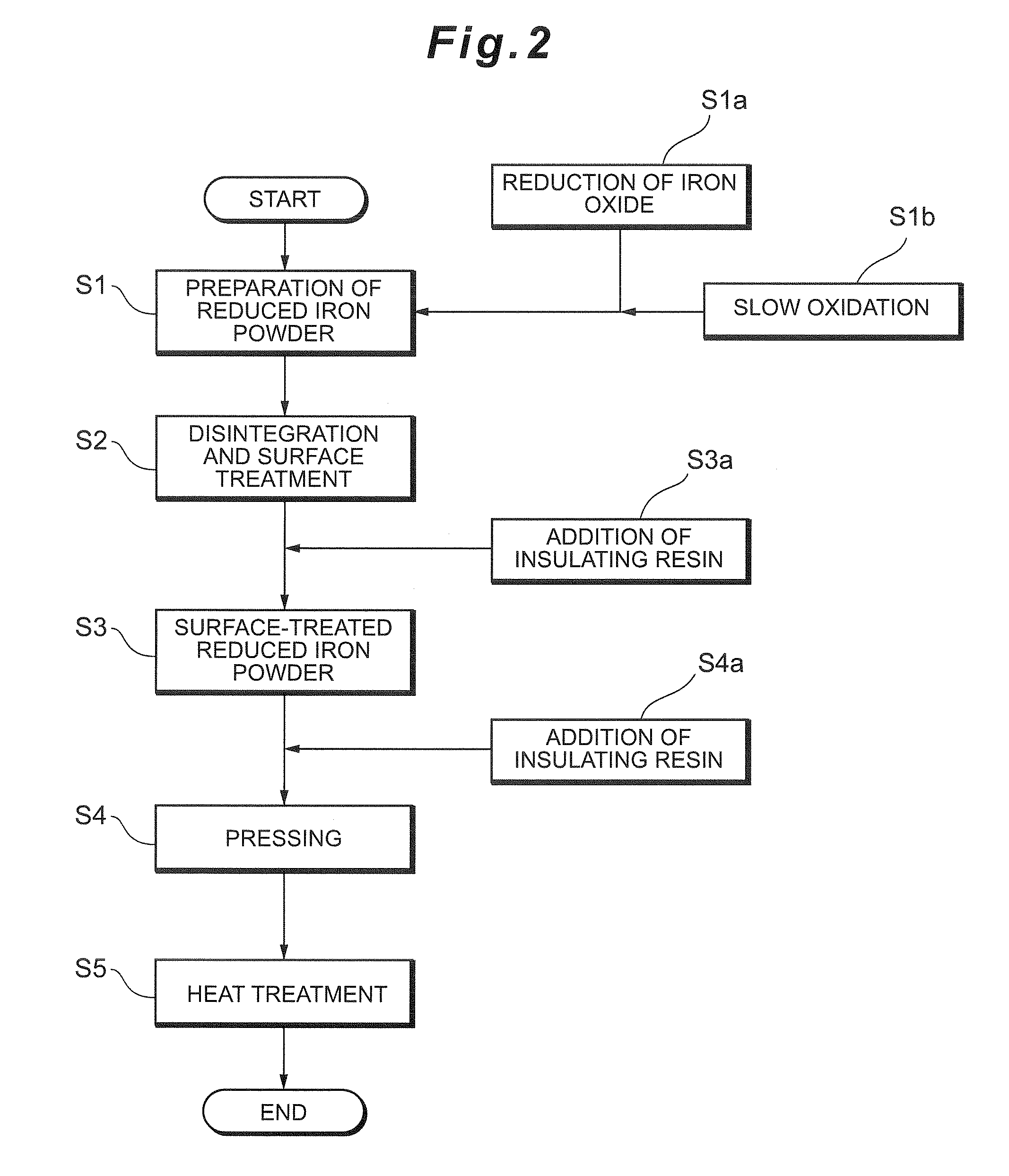Surface-treated reduced iron powder and method for manufacturing the same, and powder magnetic core
- Summary
- Abstract
- Description
- Claims
- Application Information
AI Technical Summary
Benefits of technology
Problems solved by technology
Method used
Image
Examples
example 1
[0097]5 g of the reduced iron powder of Comparative Example 1 was charged in a 250 ml polyethylene bottle, to which 50 g of steel balls (Φ3.2 mm, 0.16 μg / pc) and 20 g of acetone (reagent, 99%) were added, and phosphoric acid (reagent, 89%) was further added so that the phosphoric acid was 1.00% by weight relative to the weight of the reduced iron powder. After that, disintegration treatment and surface treatment were carried out for 6 hours using a uniaxial ball mill. The reduced iron powder after the disintegration treatment and surface treatment was taken out, separated from the steel balls with a 2 mm mesh sieve, and heated to evaporate acetone and dried, thereby obtaining (disintegrated / surface-treated) reduced iron powder of Example 1. When observing the reduced iron powder of Example 1 with SEM, the primary particle diameter was in the range of 200-300 nm.
[0098]In the same manner as Comparative Example 1 other than using the obtained reduced iron powder of Example 1, a powder ...
example 2
[0099]In the same manner as Example 1 other than adding phosphoric acid to be 1.50% by weight relative to the weight of the reduced iron powder, (disintegrated / surface-treated) reduced iron powder of Example 2 and a powder magnetic core of Example 2 were obtained.
example 3
[0100]In the same manner as Example 1 other than adding phosphoric acid to be 2.00% by weight relative to the weight of the reduced iron powder, (disintegrated / surface-treated) reduced iron powder of Example 3 and a powder magnetic core of Example 3 were obtained.
[0101]Table 1 shows the evaluation of the properties of the powder magnetic cores of Examples 1-3 and Comparative Examples 1-2.
TABLE 1Surface-treatedReduced IronPowderSecondaryParticleTreatment of Reduced Iron PowderPrimaryD90%Surface TreatmentParticleParticleReduction of IronDisintegrationAddedDiameterDiameterOxideYes / NoYes / NoAgentAmount[nm][μm]Comp. Ex. 1600° C. × 5 h, followedNoNo——100-500150by slow oxidationComp. Ex. 2600° C. × 5 h, followedYesNo——100-5006by slow oxidationEx. 1600° C. × 5 h, followedYesYesPhosphoric1.00 wt %100-5006by slow oxidationacidEx. 2600° C. × 5 h, followedYesYesPhosphoric1.50 wt %100-5006by slow oxidationacidEx. 3600° C. × 5 h, followedYesYesPhosphoric2.00 wt %100-5006by slow oxidationacidSurfac...
PUM
| Property | Measurement | Unit |
|---|---|---|
| Weight | aaaaa | aaaaa |
| Length | aaaaa | aaaaa |
| Fraction | aaaaa | aaaaa |
Abstract
Description
Claims
Application Information
 Login to View More
Login to View More - R&D
- Intellectual Property
- Life Sciences
- Materials
- Tech Scout
- Unparalleled Data Quality
- Higher Quality Content
- 60% Fewer Hallucinations
Browse by: Latest US Patents, China's latest patents, Technical Efficacy Thesaurus, Application Domain, Technology Topic, Popular Technical Reports.
© 2025 PatSnap. All rights reserved.Legal|Privacy policy|Modern Slavery Act Transparency Statement|Sitemap|About US| Contact US: help@patsnap.com



